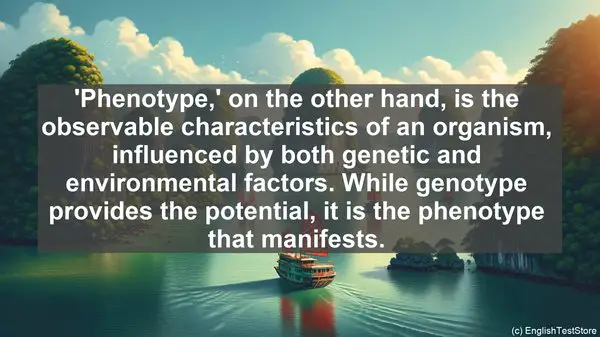Introduction
Welcome to today’s lesson. In the field of pharmaceutical biotechnology, there are several words that often cause confusion. Understanding these terms is crucial for effective communication and comprehension. So, let’s dive into the top 10 commonly confused words in pharmaceutical biotechnology.

1. Efficacy vs. Effectiveness
The terms ‘efficacy’ and ‘effectiveness’ are often used interchangeably, but they have distinct meanings. ‘Efficacy’ refers to how well a drug works in ideal conditions, such as during clinical trials. On the other hand, ‘effectiveness’ relates to a drug’s real-world performance, considering various factors like patient compliance and coexisting conditions. So, while a drug may have high efficacy, its effectiveness can vary.
2. Pharmacokinetics vs. Pharmacodynamics
Pharmacokinetics and pharmacodynamics are two essential aspects of drug action. ‘Pharmacokinetics’ deals with how a drug is absorbed, distributed, metabolized, and excreted by the body. In contrast, ‘pharmacodynamics’ focuses on the drug’s effects on the body and the underlying mechanisms. While pharmacokinetics is about what the body does to the drug, pharmacodynamics is about what the drug does to the body.
3. Biologics vs. Biosimilars
Biologics and biosimilars are terms often encountered in the context of biological drugs. ‘Biologics’ are complex drugs derived from living organisms, such as proteins or antibodies. ‘Biosimilars,’ as the name suggests, are highly similar versions of already approved biologics. While biosimilars have no clinically meaningful differences from the reference product, they are not identical due to the inherent complexity of biologics.
4. Genotype vs. Phenotype
In the study of genetics, ‘genotype’ and ‘phenotype’ are fundamental concepts. ‘Genotype’ refers to the genetic makeup of an organism, including its genes and alleles. ‘Phenotype,’ on the other hand, is the observable characteristics of an organism, influenced by both genetic and environmental factors. While genotype provides the potential, it is the phenotype that manifests.
5. Adverse Event vs. Adverse Drug Reaction
When it comes to drug safety, ‘adverse event’ and ‘adverse drug reaction’ are often used. An ‘adverse event’ is any untoward medical occurrence during drug treatment, regardless of causality. An ‘adverse drug reaction,’ on the other hand, specifically refers to a response to a drug that is noxious and unintended. Not all adverse events are adverse drug reactions, as some may be due to underlying conditions or other factors.
6. Preclinical vs. Clinical
The drug development process involves both preclinical and clinical stages. ‘Preclinical’ refers to the period before human trials, where drugs are tested in the laboratory or on animals. ‘Clinical’ pertains to the stage where drugs are tested in humans, encompassing phases like safety, efficacy, and dosage determination. While preclinical data is crucial, it is the clinical trials that provide evidence for drug approval.

7. Formulation vs. Delivery System
In drug development, ‘formulation’ and ‘delivery system’ are distinct yet interconnected. ‘Formulation’ refers to the composition and design of a drug product, including the active ingredient and excipients. ‘Delivery system,’ on the other hand, focuses on how the drug is delivered to the body, such as through oral tablets, injections, or transdermal patches. A well-designed formulation needs an appropriate delivery system for optimal drug action.
8. In vitro vs. In vivo
When studying drug effects, researchers use both ‘in vitro’ and ‘in vivo’ methods. ‘In vitro’ refers to experiments conducted in a controlled laboratory setting, often using isolated cells or tissues. ‘In vivo’ studies, on the other hand, involve the use of living organisms, providing a more holistic understanding of drug effects. While in vitro studies are valuable for initial screening, in vivo data is crucial for assessing real-world effects.
9. Monoclonal Antibody vs. Polyclonal Antibody
Monoclonal and polyclonal antibodies are widely used in various therapeutic and diagnostic applications. ‘Monoclonal antibodies’ are produced from a single clone of cells and are highly specific to a particular target. In contrast, ‘polyclonal antibodies’ are derived from multiple clones and recognize multiple epitopes. While monoclonal antibodies offer high specificity, polyclonal antibodies can provide a broader range of binding.
10. Quality Control vs. Quality Assurance
In the pharmaceutical industry, ‘quality control’ and ‘quality assurance’ are vital for ensuring product quality. ‘Quality control’ involves the testing and analysis of samples to ensure they meet predefined specifications. ‘Quality assurance,’ on the other hand, encompasses the overall systems and processes in place to ensure consistent quality throughout the manufacturing process. While quality control is about detecting issues, quality assurance focuses on prevention.
